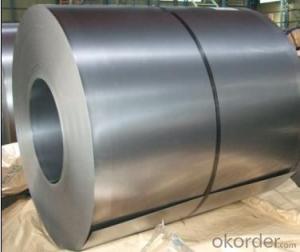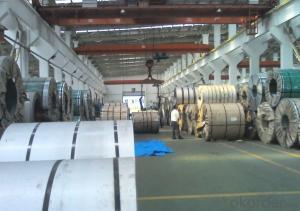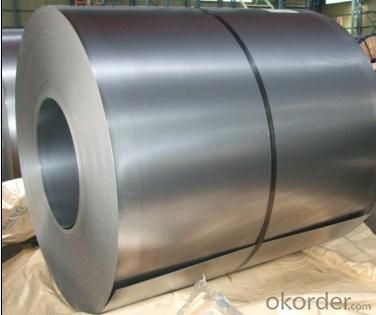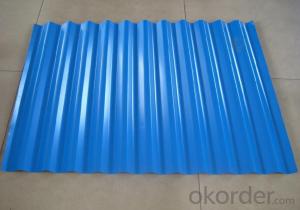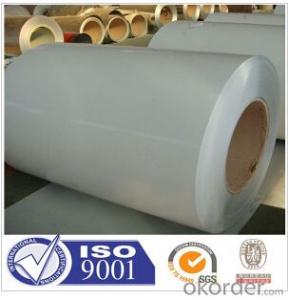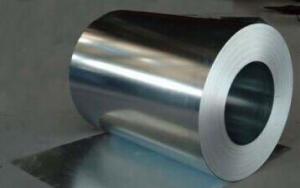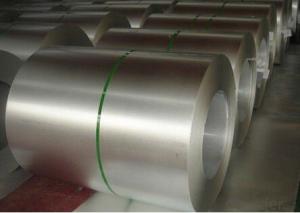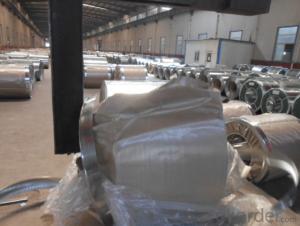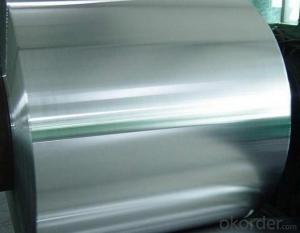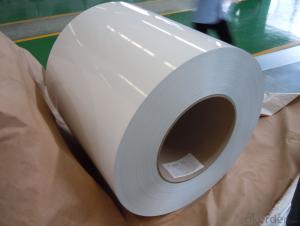Hot Dipped Galvanized Steel Coils as The Building Material
- Loading Port:
- Tianjin
- Payment Terms:
- TT OR LC
- Min Order Qty:
- 25 m.t.
- Supply Capability:
- 10000 m.t./month
OKorder Service Pledge
OKorder Financial Service
You Might Also Like
Hot Dipped Galvanized Steel Coils as The Building Material
1.Structure of Hot Dipped Galvanized Steel Coils as The Building Material
1. Hot Dipped Galvanized Steel Coils as The Building Material with organic layer, which provides higher anti-corrosion property and a longer lifespan than that of galvanized steel sheets.
2. Hot Dipped Galvanized Steel Coils as The Building Material consist of cold rolled, HDG electro-galvanized and hot-dip alu-zinc coated steel. The finish coats of Color Coated Steel Coil can be classified into groups as follows: polyester, silicon modified polyesters, polyvinylidene fluoride, high-durability polyester, etc.
3. The production process has evolved from one-coating-and-one-baking to double-coating-and-double-baking, and even three-coating-and-three-baking.
4. Hot Dipped Galvanized Steel Coils as The Building Material has a very wide selection, like orange, cream-colored, dark sky blue, sea blue, bright red, brick red, ivory white, porcelain blue, etc.
5. Hot Dipped Galvanized Steel Coils as The Building Material can also be classified into groups by their surface textures, namely regular prepainted sheets, embossed sheets and printed sheets.
2.Main Features of Hot Dipped Galvanized Steel Coils as The Building Material.
1) Rust-proof
2) Water-proof
3)Durable using
3. Hot Dipped Galvanized Steel Coils as The Building Material Images
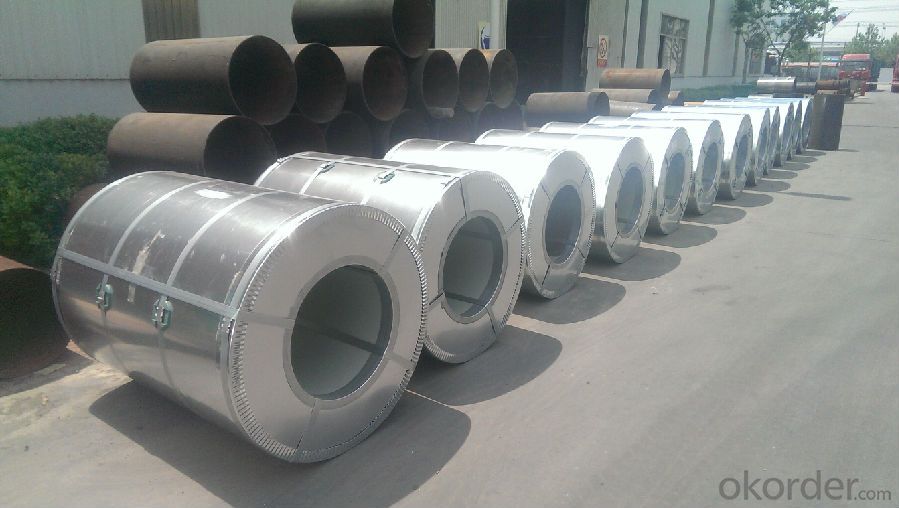
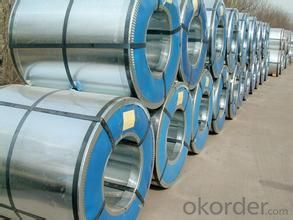
4. Hot Dipped Galvanized Steel Coils as The Building Material Specification
1)Based raw material: Hot rolled steel coils or Cold rolled steel coils
2) Thickness
3) Width
4)Coating mass
5) Spangle
6)Surface treatment
7)Coil inner diameter
8)Painting kind
9)Painting color
10)Painting thickness
Detail information:
1: Size: 0.15-1.2mm*600-1250mm
2: Paint: Top side: 15-25um, Back side: 5-9um, or according to customer’s order.
3: Base material: Hot dipped galvanized steel coil, GL
4: Zinc coating: 60g-275g.
5: Coil weight: 3-6tons
6: Coil ID: 508mm
7: Color: Any color.
8: Standard: ASTM, GB, JIS
9:Grade: CGCC,CGCH,SGCC, DX51D and ASTM
10:Surface Treatments: skin passed, chromated, oiled and antifinger
11: Approved Certificate: SGS / ISO9001 / BV
12: Package Method: Vertical/Horizontal, full wrapped with anti-moist paper inside, iron sheet (sea worthy)
13: Payments terms: T/T ,L/C,etc.
5.FAQ of Hot Dipped Galvanized Steel Coils as The Building Material
We have organized several common questions for our clients,may help you sincerely:
①How about your company?
A world class manufacturer & supplier of castings forging in carbon steel and alloy steel,is one of the large-scale professional investment casting production bases in China,consisting of both casting foundry forging and machining factory. Annually more than 8000 tons Precision casting and forging parts are exported to markets in Europe,America and Japan. OEM casting and forging service available according to customer’s requirements.
②How to guarantee the quality of the products?
We have established the international advanced quality management system,every link from raw material to final product we have strict quality test;We resolutely put an end to unqualified products flowing into the market. At the same time, we will provide necessary follow-up service assurance.
③How is the packaging and delivery?
Exporting Package with the steel material cover and the delivery term is based on the project.
- Q: I want to buy a chain that will last a long time and that i can wear ALL the time.What are the disadvantages to stainless steel jewelry?Does it look as good as silver?Is there much diference in apperance?
- Benefits Of Stainless Steel Jewelry
- Q: What are the common manufacturing defects in steel coils?
- There are several common manufacturing defects that can occur in steel coils, including surface imperfections such as scratches, pits, or dents, dimensional inconsistencies such as uneven thickness or width, edge defects like burrs or cracks, and internal defects such as inclusions or voids. These defects can impact the quality and performance of the steel coils, and manufacturers strive to minimize these issues through quality control measures and inspections.
- Q: I want to experiment with making steel and want to especially make it stronger. And also I want to know if its possible to turn a meteorite into steel?
- If you really want to do this, you should be getting some books on steel metallurgy rather than asking on Yahoo. ASM sells a Metallurgy for the non-metallurgist that would be a good introduction. Most university libraries will have the full ASM handbook that includes detailed information for different grades of steel (vol 1), heat treatment and surface hardening (vol 4), testing (vols 8-12), and casting (vol 15). A reference for continuous cooling transformation diagrams will also help in designing a heat treatment process. If you want to make something stronger than most commercial steels, you'll need to get into nanotechnology and unconventional steel processing methods like powder metallurgy. You can increase the strength of steel by about 1000% by reducing the grain size from 50 micron (typical for conventional processing methods) to 100 nm (achievable through high-energy ball milling). Though you'd also need to customize the chemistry to stabilize the grain size during the necessary thermal processing, I believe zirconium works well with iron.
- Q: Can steel coils be coated with chrome?
- Yes, steel coils can be coated with chrome through a process known as electroplating.
- Q: What are the main factors to consider when selecting a steel coil supplier?
- When selecting a steel coil supplier, the main factors to consider are the supplier's reputation and reliability in delivering high-quality products, their ability to meet your specific requirements such as coil size, grade, and coating, their competitive pricing and payment terms, their capacity and ability to handle your required quantity, and their customer service and responsiveness to your needs.
- Q: Correct me if I am wrong, but steel is an alloy between iron and carbon. Does the carbon in the steel stops the iron from rusting or corroding? Also what is the difference between mild steel and stainless steel?
- Mild steel is an alloy. It is the most common form of steel. Mild steel (a so-called carbon steel) is a general term for a range of low carbon (a maximum of about 0.3%) steels that have good strength and can be bent, worked or can be welded into an endless variety of shapes for uses from vehicles (like cars and ships) to building materials. The carbon does not stop the material rusting or corroding. In addition to iron, carbon, and chromium, modern stainless steel may also contain other elements, such as nickel, niobium, molybdenum, and titanium. Nickel, molybdenum, niobium, and chromium enhance the corrosion resistance of stainless steel. It is the addition of a minimum of 12% chromium to the steel that makes it resist rust, or stain 'less' than other types of steel. The chromium in the steel combines with oxygen in the atmosphere to form a thin, invisible layer of chrome-containing oxide, called the passive film. The sizes of chromium atoms and their oxides are similar, so they pack neatly together on the surface of the metal, forming a stable layer only a few atoms thick. If the metal is cut or scratched and the passive film is disrupted, more oxide will quickly form and recover the exposed surface, protecting it from oxidative corrosion.
- Q: What are the different types of steel coatings for coils?
- There are several different types of steel coatings available for coils, each offering unique properties and benefits. Some of the most common types include: 1. Galvanized Coating: This is the most widely used type of steel coating for coils. Galvanized steel is coated with a layer of zinc, which provides excellent corrosion resistance and protection against rust. It is ideal for outdoor applications or environments with high moisture levels. 2. Galvannealed Coating: Galvannealed steel is a type of galvanized coating that undergoes additional heat treatment, resulting in a matte finish and improved paint adhesion. It offers enhanced corrosion resistance and is often used in automotive and construction industries. 3. Aluminized Coating: Aluminized steel is coated with a layer of aluminum, which provides excellent heat resistance and corrosion protection. It is commonly used in exhaust systems and other high-temperature applications. 4. Organic Coatings: Organic coatings, such as paint or powder coatings, can be applied to steel coils to provide additional protection against corrosion, as well as aesthetic appeal. These coatings come in a wide range of colors and can be customized to meet specific requirements. 5. Tin Coating: Tin-plated steel coils are coated with a layer of tin, which offers excellent solderability and corrosion resistance. It is commonly used in the manufacturing of cans and other food packaging materials. 6. Phosphate Coating: Phosphate coatings are typically applied as a pre-treatment before other coatings to improve adhesion and corrosion resistance. They create a thin, crystalline layer on the steel surface, promoting better paint or powder coating adhesion. These are just a few examples of the different types of steel coatings available for coils. The choice of coating will depend on the specific application requirements, considering factors such as corrosion resistance, heat resistance, paint adhesion, and aesthetic considerations.
- Q: Bronze came before steel, right? thanks
- Yes; a very long time. 1000 years (?) Or even a bit more.
- Q: What are the different methods of coil packaging for steel coils?
- There are several methods of coil packaging for steel coils, including stretch wrapping, strapping, banding, and shrink wrapping. Stretch wrapping involves wrapping a stretch film tightly around the coil to secure it. Strapping and banding use metal or plastic straps to hold the coils together. Shrink wrapping involves covering the coil with a plastic film that shrinks when heated, providing a tight and protective cover. These methods help to protect the coils during storage, transportation, and handling, ensuring they remain in good condition.
- Q: With the Reduced weight of steel,wouldn't the projectile be at a much higher velocity when fired causing more damage?I mean l couldn't steel be worked to seal the bore,not damage the rifling and still cheap enough to mass produce,and be light enough to carry much more ammo.
- Okay one side note before going into the main issue. Steel is really really hard on rifle barrels. Okay, so the most common lead 9mm bullet weighs 124 grains. If all that was wanted was higher velocity, you could switch to a 115 grain bullet (which some people do), or even a 90 grain bullet if you are a reloader. (You see 90 grain bullets for 380 acp ammo, that same bullet could be reloaded onto a 9mm cartridge) But velocity alone doesn't give power. That's why a 115 grain 9mm bullet going at it's standard velocity does less damage than a 45 acp's 230 grain bullet going at it's standard velocity, because it weights twice as much and yet is going only a little bit slower But now go out to your front yard and grab a ping-pong ball and a rock about the same size. Throw them both as hard as you can. The ping-pong ball while lighter didn't go very far did it. See, the ratio of surface area to overall weight of ping-pong ball is very high, so air resistance works on it a LOT. And that is what makes lead so great for projectiles. It is dense so you have a very small surface area per unit of weight meaning that a steel bullet may beat lead in initial velocity but just 50 feet out the lead bullet would be going pretty much the same speed and at 100 yards out the steel would be dramatically slower. Note this is the same reason why 'secret sniper ice bullets' would never work even if you could get it to not melt...it's just too light. Ever hear of tanks and airplanes firing DU ammo? That stands for Depleted Uranium, it is something that is even more dense than lead which is why it makes an even better bullet than lead
Send your message to us
Hot Dipped Galvanized Steel Coils as The Building Material
- Loading Port:
- Tianjin
- Payment Terms:
- TT OR LC
- Min Order Qty:
- 25 m.t.
- Supply Capability:
- 10000 m.t./month
OKorder Service Pledge
OKorder Financial Service
Similar products
Hot products
Hot Searches
Related keywords
